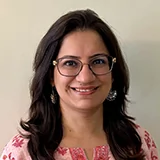This two-part study examines traditional cooking practices in rural India as well as aims to understand user experiences, to provide actionable recommendations for designing cookstoves and improving service delivery.
Background
Traditional cookstoves are used extensively across rural households in India. Their use of corresponds directly with free and easy access to fuels such as firewood, cow dung, leaves, twigs etc. The development community across the globe, comprising of governments, NGOs, civil societies and individual companies, have joined the efforts towards designing more cookstoves to help reduce dependence on forest resources, thus cutting down on the pressure imposed on forests as well as time spent collecting cooking fuel. Despite all the concerted efforts, these improved cookstoves have not seen widespread adoption across rural India, multiple reasons being the cause for this. This study was undertaken with the goal of developing an understanding of traditional cooking practices and examine some of the improved cook stoves currently in the market to assesses the user experience surrounding these improved cookstoves.
The first part of the study aims to develop an understanding of traditional cooking practices with regard to fuel and cooking technology. It also aims to capture the social and cultural activities that take place before, during, and after cooking across India. The second part of the study assesses the user experience of some improved cookstoves currently in the market.
Approach
This study was conducted in ten villages in five states across India over a period of two months. In order to ensure variety among the study villages, this study employed quota sampling to identify and divide sub-groups on the basis of their cooking practices and fuel use across the country. Within the states a non-random selection was employed to select districts and villages. The districts were selected on the basis of maximum diversity in terms of availability of crops/coastal proximity/ economic condition. One to two districts were chosen from each state, with two villages selected as the study sites. To identify participant households (representing different socio-economic status, cooking practices and fuel usage) within each village, the study used judgmental sampling, informed by a village transect walk.
Implications
Results from the study profile the cooking practices across rural India highlighting variations across states. The findings provide actionable recommendations for designing the next generation of improved cookstoves appeals to rural households, meets their cooking demands, and delivers health, economic, and environmental co-benefits.




